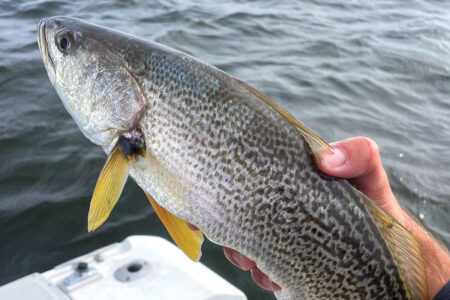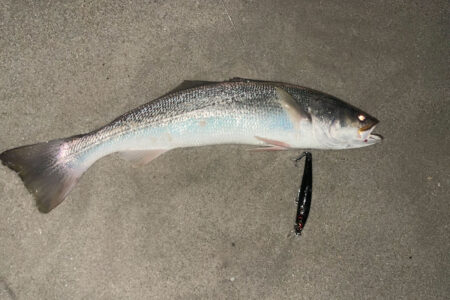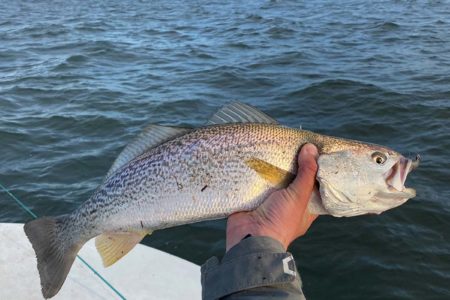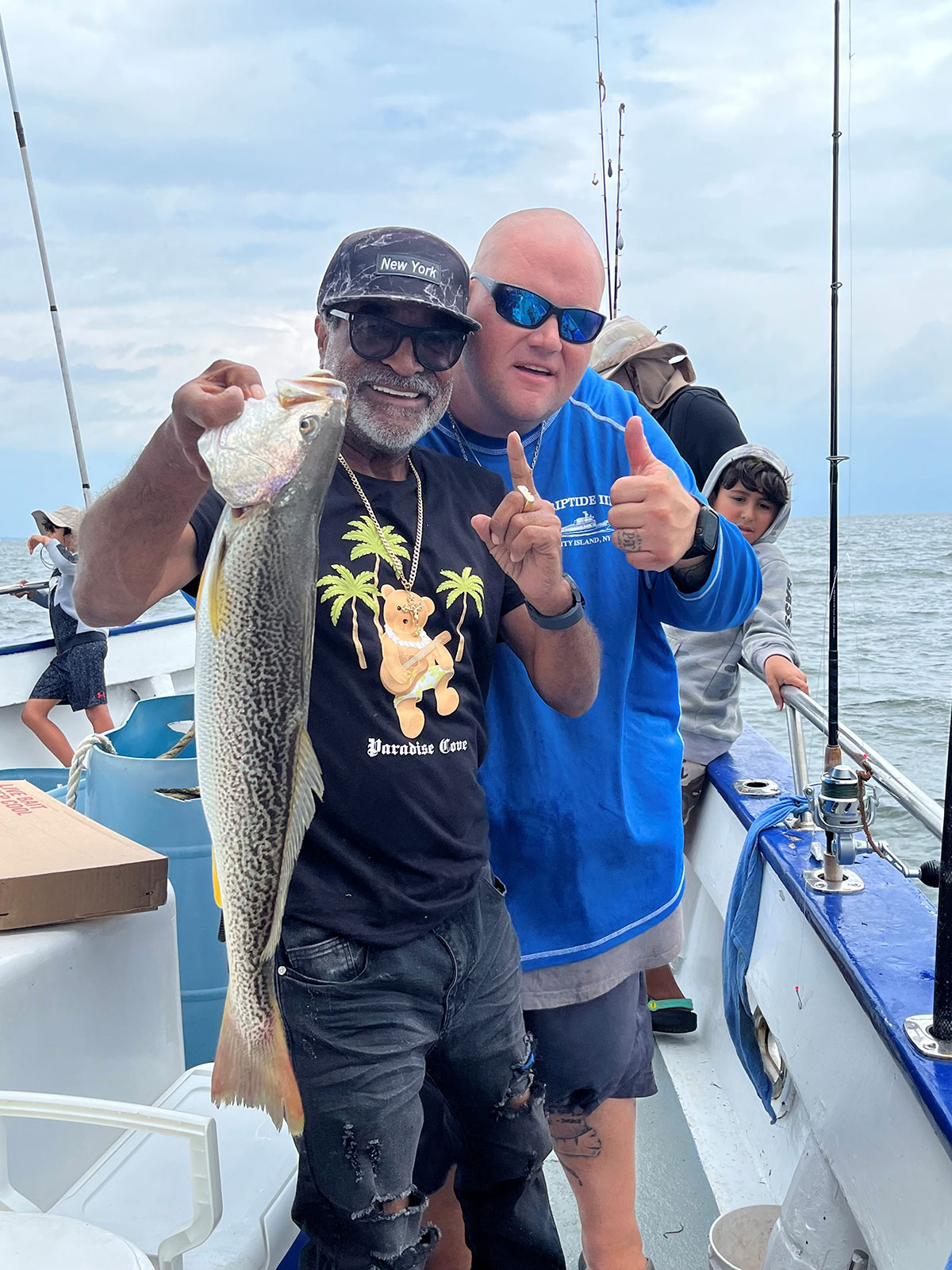
They’re back and they seem to be here to stay!
Ask any angler who regularly fishes the waters of the Long Island Sound and its bays and harbors, and they will agree that weakfish have made a mysterious appearance of abundance each season for over a half-decade. This coming spring will make 55 years that I’ll be fishing, and it wasn’t until 5 or 6 years ago that I recall ever experiencing a weakfish fishery along the North Shore waters. Neither could our former Senior Editor, the Late Fred Golofaro. Not long before his passing, Fred asked me to research and write a piece concerning the new fishery that was born. First, sea bass came from left field, and then suddenly, the weakfish followed suit. Frankly, I’ve been reluctant to do the piece because, as I told Fred, “What happens if it was just a freak and the fish decided not to show the next season?” Who am I to question a master fisherman who left us far too early? Therefore, to fulfill Fred’s wish, I did some scouting and produced some North Shore sharpies eager to share their knowledge with Fisherman readers. Before we do, let’s take a brief walk down memory lane.
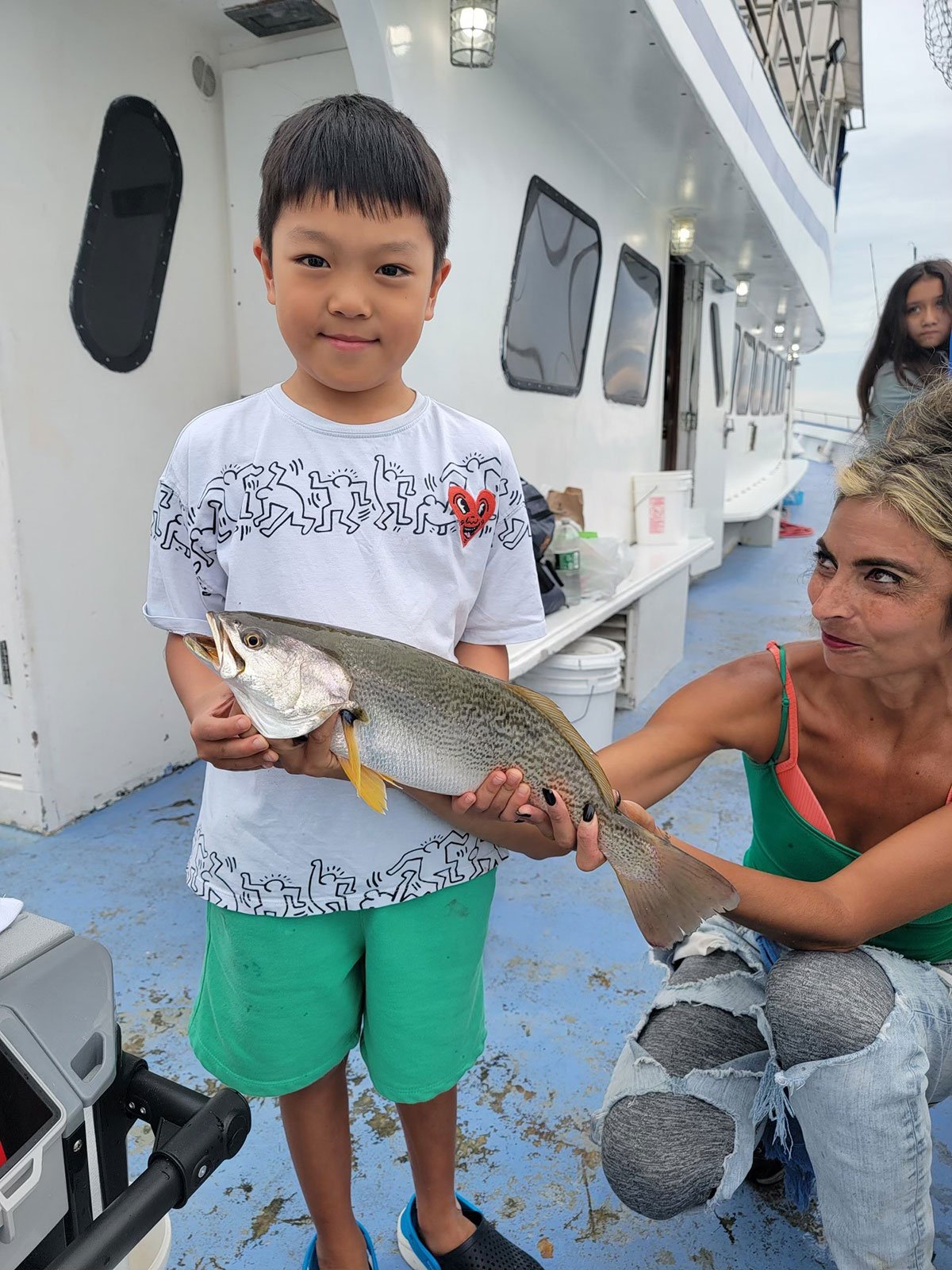
The Wild And Crazy 70s
Fred and I were blessed to fish and experience the grand weakfish action in the ’70s when each spring produced wild and crazy action on the iridescent beauties inside the Great South Bay. Oh sure, the bays east and west adjacent to the Great South Bay had some weakfish, as did the Long Island Sound, but those fish were mainly spillovers, mostly bycatch rather than being pursued.
Just as today, the spring weakfish that entered the Great South Bay are spawning since the bottom contour and the salinity levels are tailor-made for weakfish nesting. This natural phenomenon normally occurs from May’s full moon through June’s full moon. Just as in yesteryear, today’s nesting holes remain on the flats off Heckscher State Park and eastward to Bellport Bay. However, the area that gets the most play by anglers is the waters surrounding buoys 13 to 17 off Ocean Beach and Ocean Bay Park.
Happily, the waters that once held a huge spawning factory inside the Peconic Bays have again become fruitful for the past few years. As for the North Shore, during the 70s and 80s, some years saw some fantastic action north of Port Jefferson Harbor around buoy 11, which normally occurred during the first week of July. Mount Misery Shoal, north of Mount Sinai Harbor, also experienced sporadic catches some years, while other years drew a big blank. Oddly but delightedly, the past several years have seen an enormous influx of weakfish along most of Long Island Sound from May through late October or early November and inside all the mid-island bays and harbors.
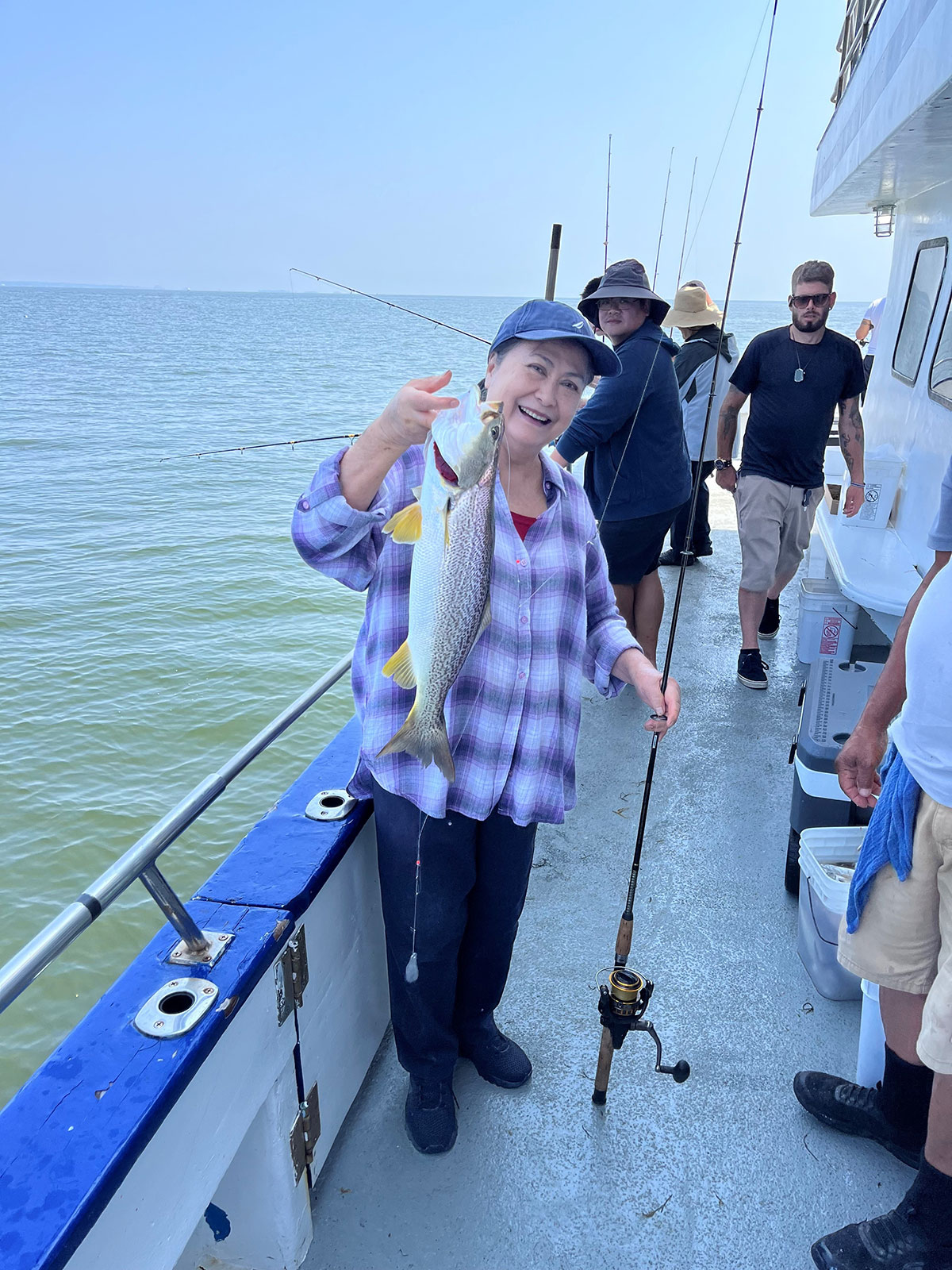
Enforcement Is The Key
The question most anglers ask is why a weakfish fishery from out of the clouds? After some digging, I discovered that recovering water quality after many years of polluting is a major factor. Thanks to the stringent enforcement by the EPA, which went after illegal drainage and discharge of sewage and chemicals dumped in the Sound. The enforcement has brought back the salinity levels that have once again allowed the growth of vegetation and shellfish life simultaneously as a weakfish resurgence across the Northeast. These changes have brought a significant abundance of baitfish into all the bays and harbors and the Long Island Sound itself.
The change in water quality attracted massive amounts of peanut bunker, which are part of the weakfish diet. Adult weakfish are mainly piscivorous, meaning they feed mostly on fish, such as menhaden, anchovies, sand eels, shrimp, and spearing. They will also feed on sea worms and crustaceans, which are all opportunities now present in the Sound and its bays and harbors.
According to the marine biologist I spoke with in Stony Brook, provided these elements continue to be on the upswing, the balance of the weakfish and sea bass fishery will be here to stay with their natural spawning cycles. This means that just like any other fishery, the duo will have its future of ups and downs.
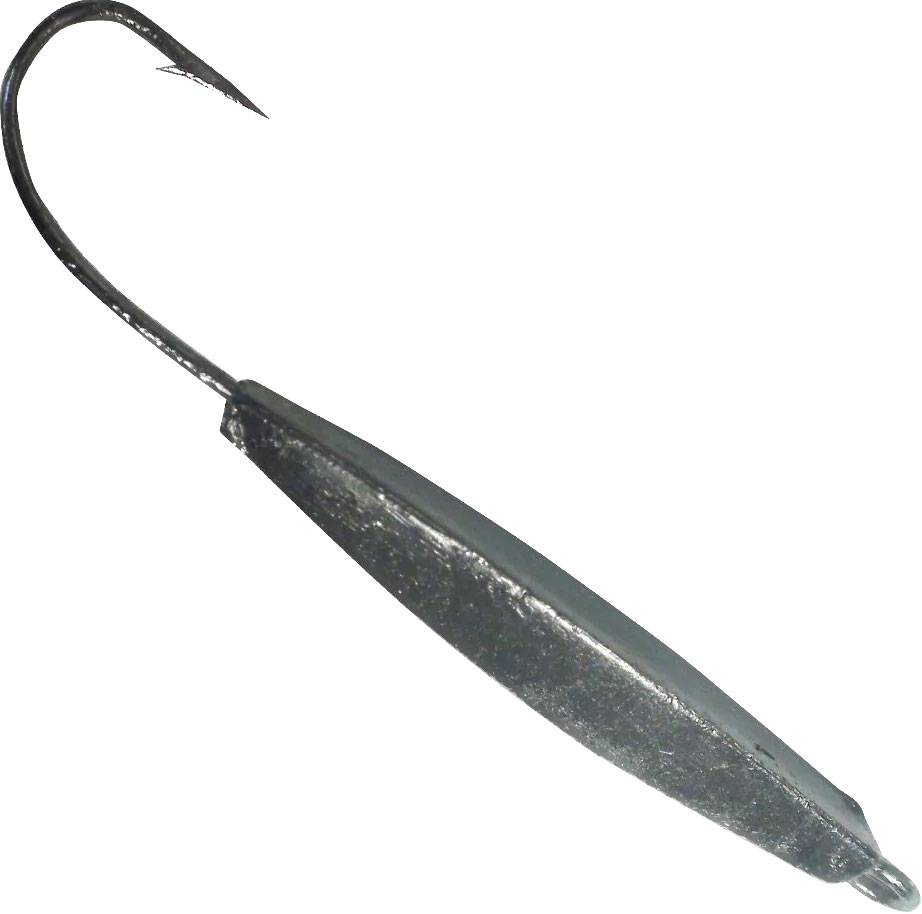
A Party Experience
I always labeled targeting adult weakfish as a spring fling affair. Then, as summer rolled in, so did the smaller siblings of the species, which took up the space where their older brothers and sisters laid and fertilized the eggs.
However, speaking with Captain Carl Madsen of the City Island-based party boat the Riptide III, Captain Carl, for the past several years, has been limiting the boat with big adult-size weakfish to 8 pounds nearly every day throughout the spring, summer, and fall. For those unaware, Capt. Carl and crew bottom fish throughout the entire season, starting with blackfish in mid-April, then making the switch to porgies and whatever else wants to take the bait from May 1st until blackfish season again on October 11th, sailing until the tog stop chewing, sometime in late November.
Oddly enough, right from the start of porgy season, Riptide patrons bang away at a fair share of winter flounder as well as boat limits of weakies. Capt. Carl explained that early in the season, they catch them on the slopes in Oyster Bay mixed in with the scup. Later in the season, they are taken on the deeper drops, which are usually on the corners of the wrecks. Most often, the captain marks them on the recorder, and when that is the case, you’re almost guaranteed a boat limit. At times, Capt. Carl caught them in over 100 feet of water. During the fall, many days, boat limits or close to them are seen while fishing for tog directly on the rockpiles and wrecks.
Though many of the weakfish are caught on porgy and blackfish baits, boat regulars bring aboard their light spinning gear and their favorite artificial soft baits, which are extremely effective even in deep water. Capt. Carl suggested bringing along a light spinning outfit in the 8 to 10-pound class for when they are fishing in shallow water. The captain favors 10-pound test fluorocarbon fishing line or leaders. Plain or white leadhead jigs in the half to 1-ounce weight tied to the line using an Improve Clinch or Palomar Knot are ideal as well. Thread a pink or white plastic twister tail on the jig, and you’re ready to rock and roll. For the deeper drops, baitcaster outfits in the 10 to 15-pound class can handle 2 and 3-ounce diamond jigs, which are most effective in the deep. When fishing the deeper water, you’ll appreciate the extra backbone while working the jigs, whereas the light spinning outfits seem to be too awkward for the task at hand.
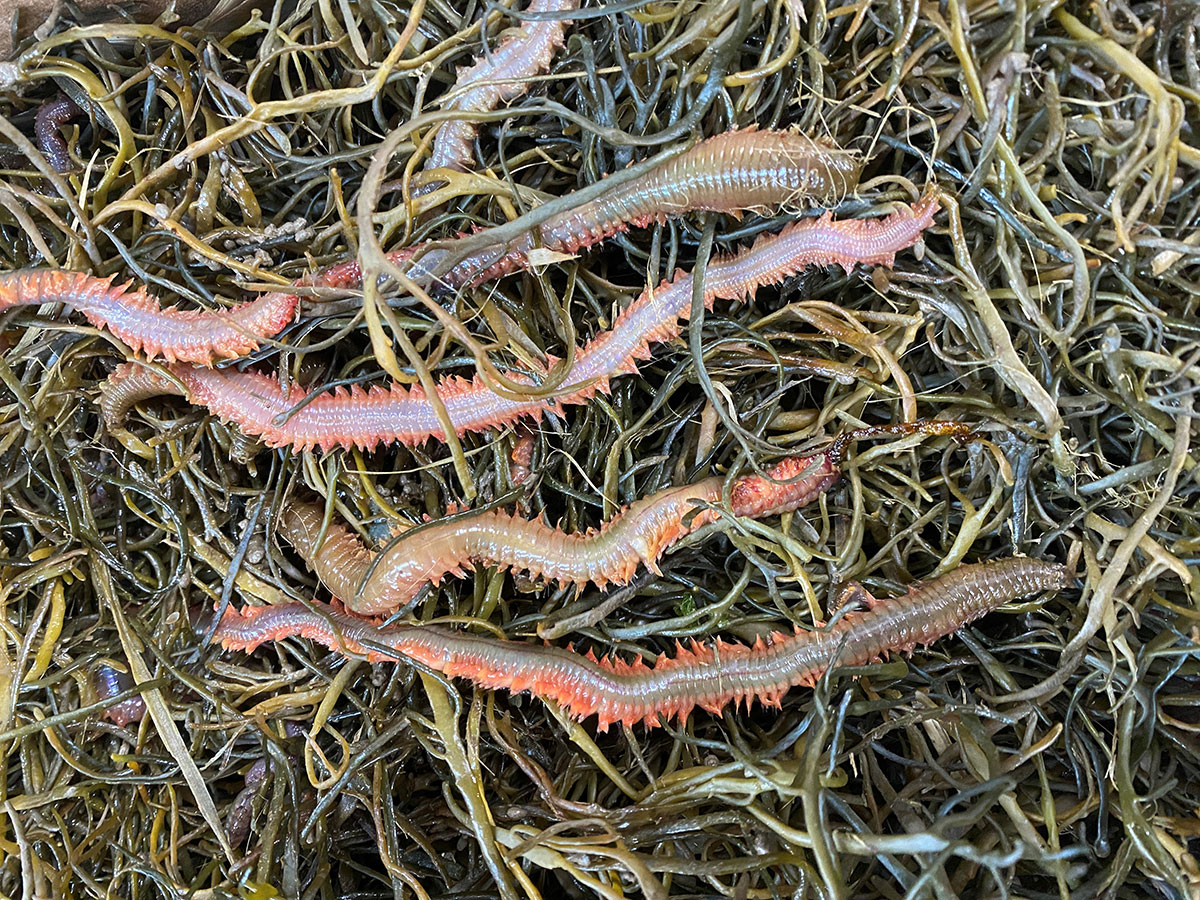
Tips From A Pro
Rob Berry has spent much of his life fishing the waters of the North Shore. If anyone knows about weakfish or any of the fish that swim along the Long Island waters, it is definitely Rob. As owner of Hi-Hook Bait and Tackle on New York Ave. in Huntington, Rob is delighted with the influx of weakies the past few years. Rob strongly feels that a combination of vegetation growth inside all the bays and harbors, largely due to cleaner waters coming from the Long Island Sound, has magnetized a myriad of baitfish that use much of the plant life as refuge and food, which in turn attracts larger prey such as weakfish. Most of their dietary plan includes a variety of the delicacy, particularly peanut bunker, which has been superabundant and an all-time favorite of large weakfish since the beginning of the duo’s existence.
Rob explained that weakfish are structure-oriented fish that return to the same area year after year. They prefer shallow water fortified with plenty of eelgrass as well as drop-offs, especially channel edges and, at times, the middle of the channel. Actually, if you find the peanut bunker, then the odds are weakfish can’t be far away. When you do locate the strike zone on the structure-orientated bottom, be sure to mark the spot with your GPS for future reference. As for tackle, Rob is adamant about employing light spinning or baitcaster outfits in the 8 to 10-pound class. Be sure to use quality reels with a smooth drag and quality fishing line, preferably a fluorocarbon line such as P-Line Fluorocarbon of 10-pound test, which is incredibly strong and practically invisible under water. As for lures, the never-ending array of plastics will do the trick. However, Rob’s weapon of choice is a half to 1-ounce Bridgeport W3X Diamond Jig with a super-sharp Gamakatsu 5/0 Octopus hook attached to the line via a Dropper Loop 6 inches above the diamond jig. Add a whole juicy live sandworm to the Octopus hook and hold on tight, as this combo out-produces all else when the weakfish are in town. Rob said that the diamond jig attracts the weakies with its flash and flutter, while the sandworm are their demise. This rig will especially pull the rabbit out of the hat when the weakfish become finicky and quite selective. After all, a sandworm to a weakfish is like a roast beef sandwich to a construction worker at lunchtime. Incidentally, if you cannot construct the rig yourself, fret not, as Rob does carry them in his store.
Lastly, besides weakfish being structure-orientated, they are very much tidal-influenced and light-sensitive, meaning that they are more aggressive and eager to feed on an outgoing tide and when there is low light, such as cloudy days or just after dusk and before dawn. Not to say that the fish won’t feed in bright, sunny daylight. In fact, I have had many great days with bright sunshine on both sides of the tide. Whether you head for the weakfish grounds this season or not, I hope you enjoyed this trip down memory lane and the great tips from our two pros. If you do head out this season, remember catch and release is contagious. If you decide to put some fish in the box, keep in mind that there is a 1-fish limit per day of weakfish no smaller than 16 inches.
